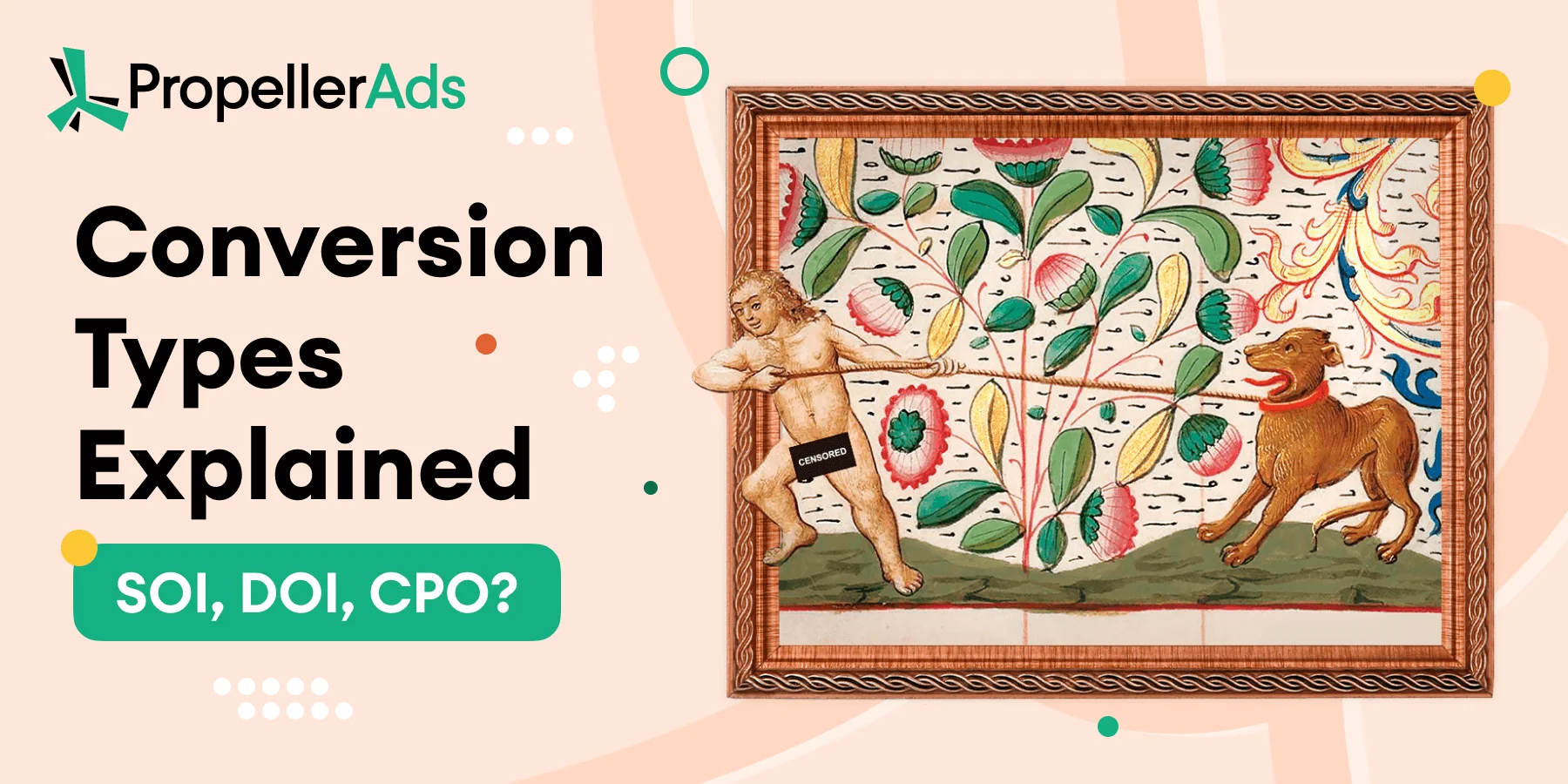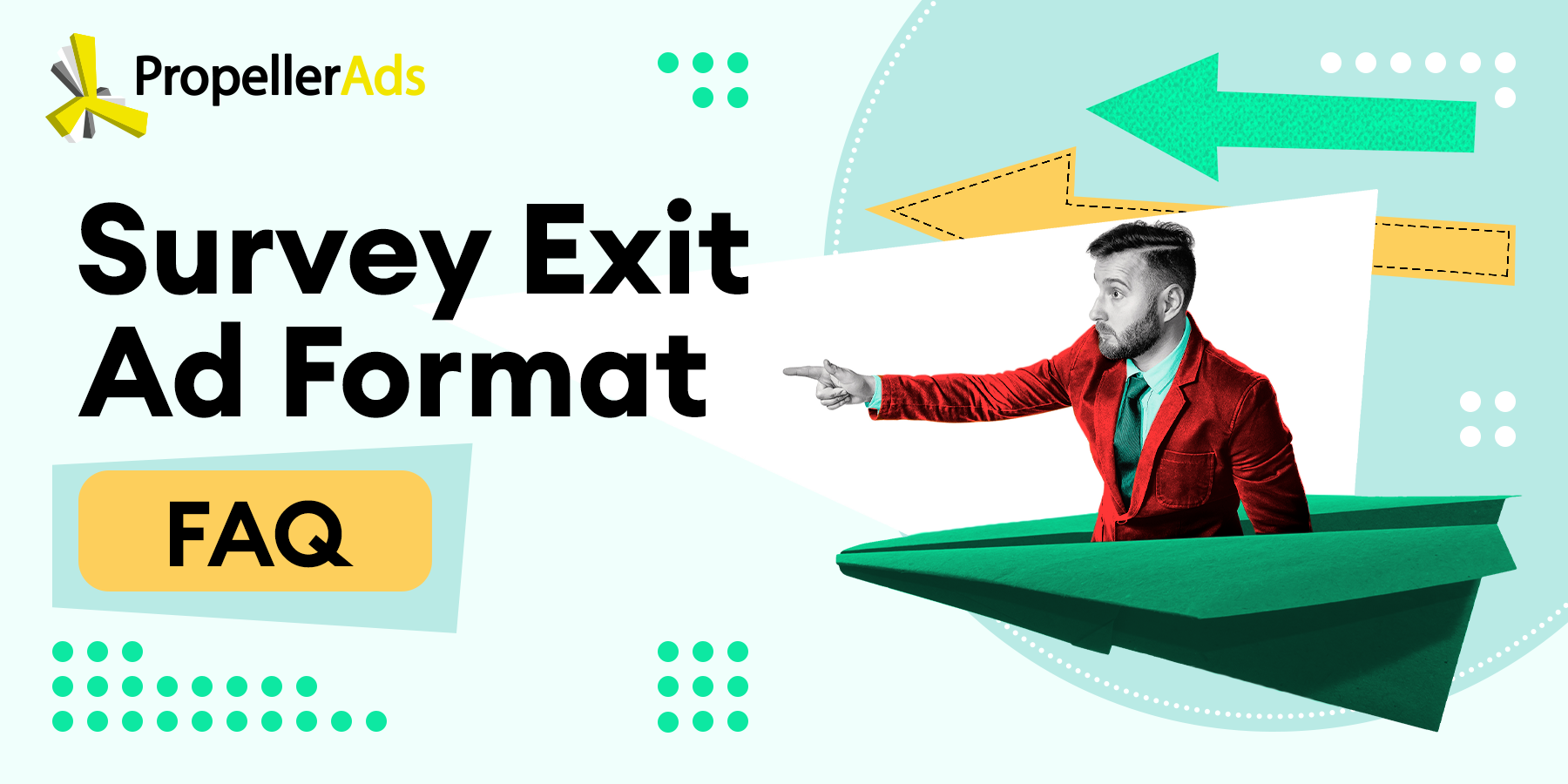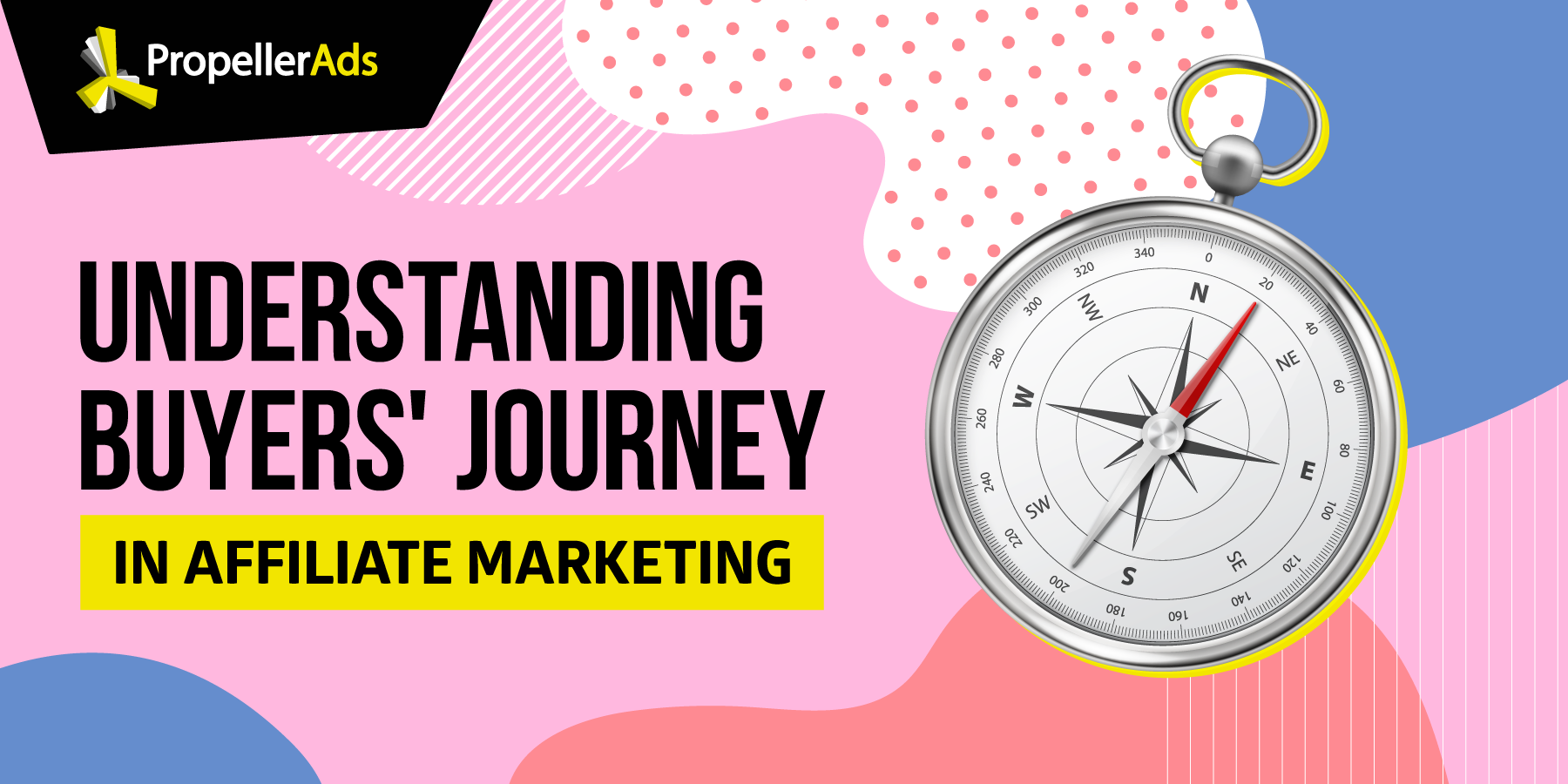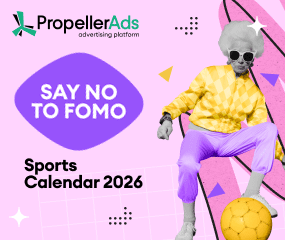Conversion Types: From Simple to Hardcore

For newbies, affiliate conversion types can feel like hieroglyphics: SOI, DOI, CPI, CPS… and the list goes on. Yet, knowing what each conversion type means is crucial to your success. Conversion flows determine how easy (or hard) it is to get paid, how much you’ll earn, and which traffic and verticals you should focus on.
In 2025, advertisers are stricter than ever about traffic quality, fraud controls are tighter, and hybrid models are on the rise. This guide breaks down the most common conversion types, groups them by difficulty, and explains where each works best.
Easy Affiliate Conversion Types (for Beginners)
These flows require minimal user action and are ideal for affiliates just starting out. They’re easier to optimize, need smaller budgets, and help you learn how to work with traffic and tracking.
- SOI (Single Opt-In): So, what is SOI in affiliate marketing? Probably, one of the easiest conversion types in affiliate marketing. The user just needs to leave their contact details – usually an email, phone number, or name. You’ll see SOI flows a lot in Giveaways, Social, and Gaming offers.
- Survey / Quiz Submits: Instead of asking for details right away, these offers get users to complete a short survey or a fun quiz. They’re often used as a pre-qualification step in Giveaways, Finance and other Leadgen funnels. Because they feel more like entertainment than commitment, users engage easily, and you can generate conversions at scale.
By the way, PropellerAds offers a Survey Exit traffic type, where you can buy super-engaged users who have just completed surveys across niches like Finance, iGaming, Giveaways, and even Social.
- Sign-up: A light flow where the user creates a free account with minimal effort – usually just a name, password, or email. You’ll see this flow a lot in Gaming, Utilities, and Software with freemium models, where the goal is to get as many users as possible to try the product.
- CPI (Cost Per Install): Here, the conversion happens when a user downloads and opens an app (or a desktop extension). It’s still considered simple, though advertisers today often add extra quality checks like retention or engagement requirements.
- Push Subscriptions: This one is as straightforward as it sounds – the user just agrees to receive push notifications. It’s a very lightweight flow that can bring in huge volumes of conversions with the right targeting.
Medium Conversion Types (Intermediate Level)
Medium conversions ask a bit more from the user – sometimes, it’s an account verification, payment step, or additional user info. They’re not as lightweight as SOI or installs, but they reward you with bigger payouts and higher-quality leads. If you’ve got some experience with traffic optimization, this is where things start to get interesting.
- DOI (Double Opt-In): This one is a step up from SOI. The user submits their details and then confirms them via email or SMS. That extra step filters out the low-quality traffic and leaves you with much more qualified leads.
- CPE (Cost Per Event): Instead of stopping at an install, the user also completes a specific in-app action – signing up, finishing a tutorial, topping up, or making a purchase. Huge in Gaming and Finance because it measures real engagement, not just curiosity clicks.
- Free Trial: The user signs up for a trial that usually runs from 3 to 30 days. Often, they’ll enter credit card info so the subscription continues automatically. This model is a classic in SaaS and streaming services, where advertisers want long-term paying customers.
- COD (Cash on Delivery): Rare for Tier-1, but truly timeless for Tier-2 and 3, COD is still pretty common in eCommerce and Nutra (verticals with physical products only). The user fills out a form, the call center confirms by phone, and the product gets shipped. The affiliate is paid once the order is locked in.
- CPO (Cost Per Order / Sale): Similar to COD, but the order is processed fully online without a call center. Smooth and efficient, but still one of the complicated conversion types in affiliate marketing, since it requires users to trust the process and pay upfront.
- APK Installs: APK installs work just like regular app installs, except the user downloads the file directly from the advertiser’s landing page instead of through Google Play. This model is especially common in niches like iGaming, and yes, it adds a bit of friction, but it’s still a reliable flow in verticals where users expect it.
- KYC (Know Your Customer) Verification: A rising star in Finance, Crypto, and iGaming. Here, users upload an ID, a selfie, or another document to verify their account. It’s more effort for them, but advertisers pay well because they only get real, qualified customers.
- Wallet Top-Up / In-App Purchase: In this model, the user not only installs and opens an app but also makes a small deposit or purchase inside it. Very popular in Gaming, Sweepstakes Gaming, and some types of Finance, and it often pays significantly more than a simple CPI.
Hard Conversions (Advanced Level)
Hard conversions are where affiliates really prove their skills. These flows ask users to make payments, share additional data, or go through multi-step verifications. They’re the hardest to pull off, but come with the highest payouts and the best lifetime value for advertisers.
- CPL (Cost Per Lead), the harder version: A “lead” can mean very different things depending on the advertiser – from a quick newsletter sign-up or a quote request, to a full registration form with detailed personal info. In some verticals, it can even include downloads (like whitepapers) or webinar registrations. The common thread is that advertisers only pay when they get a new potential customer.
In affiliate marketing, most CPL offers lean toward the heavier side – think Finance, Insurance, or SaaS – which is why this model is usually considered a harder flow, but also one with excellent payouts.
- FTD (First Time Deposit): What does FTD mean in affiliate marketing? It’s a golden classic in iGaming and Finance. In FTD, the user not only registers but also makes their very first deposit. For advertisers, this is the golden moment that turns a curious visitor into a paying customer.
- CPS (Cost Per Sale): You get paid when a user makes a purchase. It’s huge in eCommerce and Utilities, and many advertisers also offer revenue share – meaning you keep earning a percentage of what the customer spends over time.
- Hybrid Conversions: Two-step flows where the first action (like a registration) isn’t paid, but the second one (like a deposit or purchase) is. They’re trickier to optimize, but also one of the fairest models for advertisers.
- KYC + Deposit: This combined model is most common for Finance and iGaming. Users must complete full identity verification (uploading an ID, selfie, or proof of address) and make a deposit. Yup, it’s like a mix of two most complicated user actions in one, and it’s a lot of effort, but advertisers reward affiliates with some of the highest payouts in the industry.
- High-Value SaaS / Finance Subscriptions: Instead of free trials, these offers pay out when a user commits to a paid subscription plan (like a productivity app or financial service). Harder to convert, but perfect for Tier-1 traffic and audiences with spending power.
- Loan / Finance Approvals: Common in Finance and Insurance. The user completes a full loan or credit card application – sometimes even passing a soft credit check. These flows are heavily regulated, but payouts are excellent.
- PayPerCall: Affiliates get paid for driving qualified calls – often defined by a minimum duration (like, no less than 3 minutes). Still strong in high-ticket verticals like insurance or home services, though less scalable today as many users prefer online forms or chat.
Conclusion
There are dozens of affiliate conversion types, each with its own learning curve and payout potential. Beginners should stick with SOI, CPI, and push subs, while more advanced affiliates can try DOI, CPE, or CPO. The most experienced players usually scale FTD, CPS, and advanced versions of CPL.
At PropellerAds, you can select your conversion type while creating a campaign and use auto-optimization tools to send traffic that matches your goals.
Test different flows, track your metrics carefully, and don’t be afraid to experiment. That’s how you’ll find the sweet spot between difficulty and reward!
Join our Telegram for more insights and share your ideas with fellow-affiliates!



